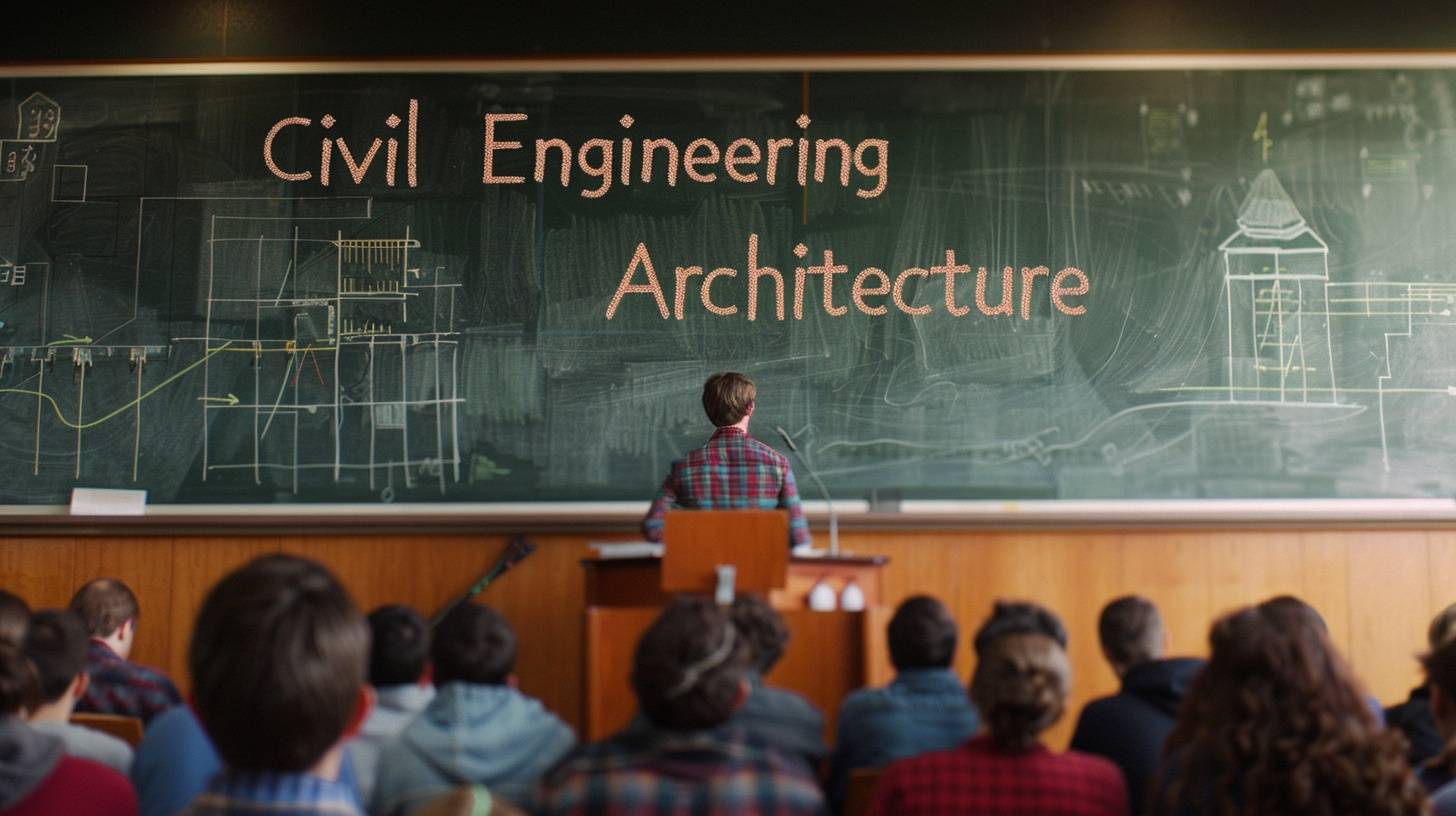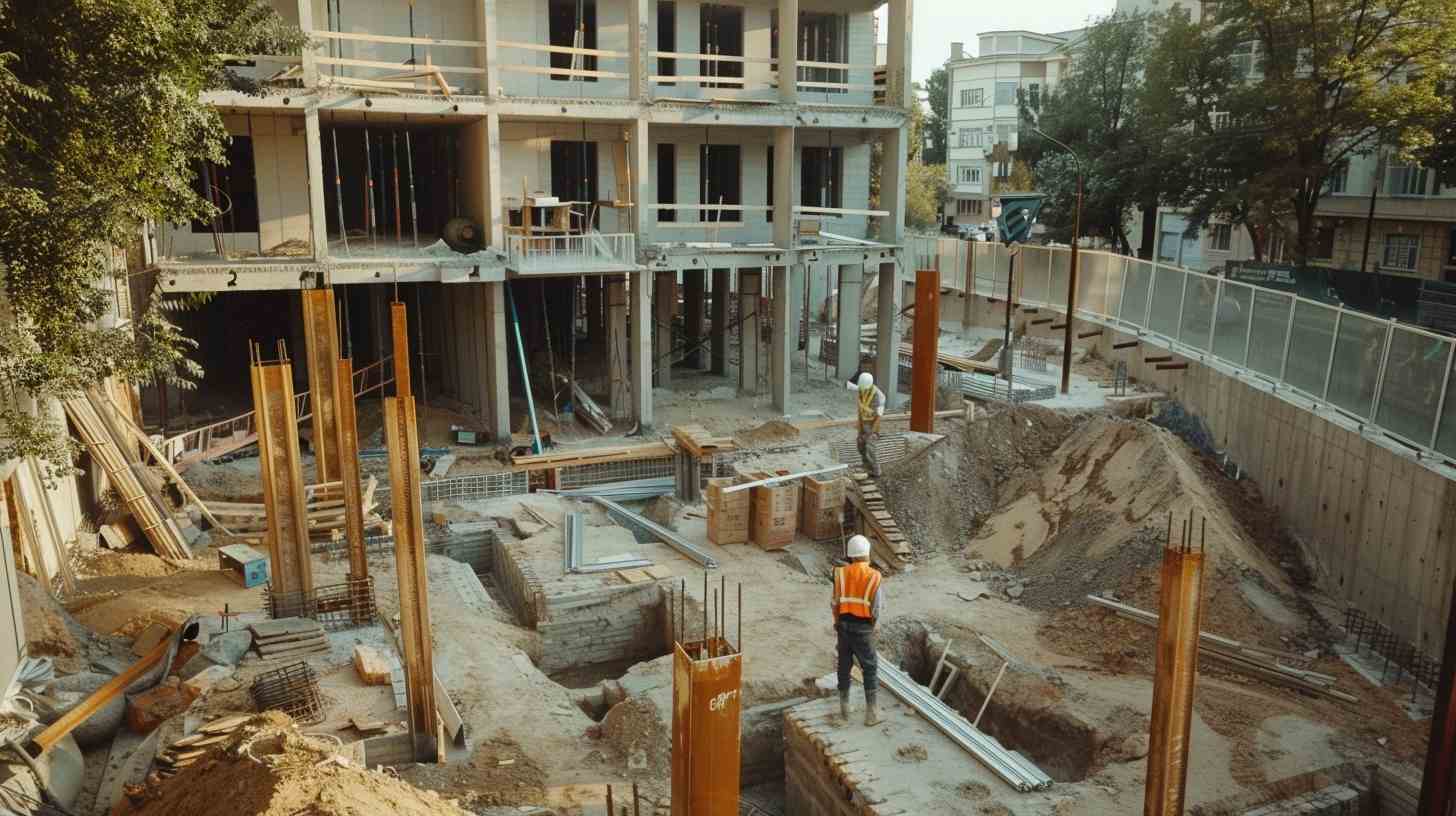
What is The Difference Between Civil Engineering And Architecture

- What is Civil Engineering?
- What is Architecture?
- The Skill Sets and Education Required for Civil Engineers and Architects
- Real-World Examples of Collaboration Between Civil Engineering and Architecture
- The Future of Civil Engineering and Architecture
- Collaborate with Designs Boss for Your Next Architectural Project
Have you ever wondered what the difference is between civil engineering and architecture? While both professions play crucial roles in the construction industry, they have distinct responsibilities and areas of expertise. Today, we’ll look at the key differences between civil engineering and architecture, helping you understand how these two fields collaborate to create the built environment around us.

What is Civil Engineering?
Civil engineering is a broad field that focuses on designing, constructing, and maintaining the built environment. This includes infrastructure such as roads, bridges, tunnels, dams, and water systems. Civil engineers use their knowledge of mathematics, physics, and materials science to analyze and solve complex problems related to construction and infrastructure.
Civil engineers are responsible for ensuring that structures are safe, functional, and sustainable. They often work on large-scale projects that have a significant impact on communities and the environment. Some of the sub-disciplines within civil engineering include structural, geotechnical, transportation, environmental, and water resources management.

What is Architecture?
Architecture, on the other hand, is primarily concerned with the design and construction of buildings, both residential and commercial. Architects focus on the aesthetic, functional, and spatial aspects of buildings, considering factors such as the client’s needs, site conditions, building codes, and sustainability.
Architects aim to create spaces that are not only visually appealing but also functional and comfortable for the people who will use them. They are involved in the entire project lifecycle, from the initial concept and design phases to the final construction and completion of the building.
How do Civil Engineering and Architecture Collaborate?

While civil engineering and architecture have distinct roles, they are interconnected fields that often collaborate on projects. Civil engineers provide the technical expertise needed to ensure that a building’s structure is sound and can withstand the loads and stresses it will face. They work closely with architects to develop feasible and safe designs.
Architects, in turn, rely on the input of civil engineers to create designs that are not only aesthetically pleasing but also structurally viable. Together, civil engineers and architects work to create functional, safe, and visually appealing structures that meet the needs of their clients and the community.

The Skill Sets and Education Required for Civil Engineers and Architects
To become a civil engineer or an architect, one must possess a specific set of skills and educational qualifications. Both professions require a strong foundation in mathematics and science, as well as creative problem-solving abilities.
Civil Engineers
Civil engineers typically hold a bachelor’s degree in civil engineering from an accredited university. During their studies, they gain a deep understanding of mathematics, physics, and engineering principles. They learn to analyze and design complex structures, considering factors such as loads, stresses, and environmental conditions.
In addition to their technical knowledge, civil engineers have strong project management and communication skills. They often work on multidisciplinary teams and must be able to effectively collaborate with other professionals, such as architects, contractors, and government officials.

Architects
Architects usually hold a professional degree in architecture, which can be either a five-year Bachelor of Architecture (B.Arch) or a Master of Architecture (M.Arch) degree. During their education, architects develop a strong foundation in design theory, building materials, and construction methods.
Architects must have excellent visual communication skills, as they often use drawings, 3D models, and renderings to convey their designs to clients and other stakeholders. They also need to have a deep understanding of building codes, zoning regulations, and sustainability principles to create designs that are both functional and compliant with local requirements.

Real-World Examples of Collaboration Between Civil Engineering and Architecture
One notable example of the successful collaboration between civil engineering and architecture is the work of Santiago Calatrava. Trained as a civil engineer, Calatrava has gained international recognition for his innovative and visually striking designs that seamlessly blend engineering principles with architectural aesthetics.

His projects, such as the Milwaukee Art Museum and the World Trade Center Transportation Hub, showcase the potential for interdisciplinary collaboration in the construction industry.

Another example of the importance of collaboration between civil engineers and architects can be seen in the construction of the Burj Khalifa in Dubai, currently the tallest building in the world. The tower’s design required close coordination between the architectural team at Skidmore, Owings & Merrill (SOM) and the structural engineers at Bill Baker and Associates. Together, they developed innovative solutions to overcome the challenges posed by the building’s extreme height and unique design, resulting in a stunning and structurally sound marvel of engineering and architecture.

The Future of Civil Engineering and Architecture
As our world continues to evolve, so too do the fields of civil engineering and architecture. With the advent of new technologies and a growing emphasis on sustainability, both professions are adapting to meet the challenges of the 21st century.
Technology Revolutionizing the Construction Industry
In recent years, technology has played an increasingly important role in the construction industry. Building Information Modeling (BIM) software has revolutionized the way civil engineers and architects collaborate, allowing for more efficient and accurate design and construction processes.
Other technologies, such as 3D printing, drone surveying, and virtual reality, are also being utilized to streamline workflows and improve project outcomes. As these technologies continue to advance, civil engineers and architects will need to stay up-to-date with the latest tools and techniques to remain competitive in their fields.

Sustainability
Sustainability has become a key focus for both civil engineers and architects in recent years. With the growing awareness of the environmental impact of construction, both professions are working to develop more sustainable practices and designs.
Civil engineers are exploring new materials and construction methods that minimize waste and reduce the carbon footprint of infrastructure projects. They are also developing innovative solutions for water management, renewable energy integration, and resilient design to address the challenges posed by climate change.

Green Building Practices
Architects, meanwhile, are incorporating green building principles into their designs, such as passive solar heating and cooling, natural ventilation, and the use of renewable materials. They are also working to create more energy-efficient and healthy indoor environments that promote the well-being of occupants.

Collaborate with Designs Boss for Your Next Architectural Project
At Designs Boss, we understand the importance of collaboration between civil engineers and architects in creating successful construction projects. Our team of experienced professionals is dedicated to delivering innovative and sustainable design solutions that meet the unique needs of our clients.
Whether you’re planning a residential, commercial, or industrial project, we have the expertise and knowledge to bring your vision to life. From concept to completion, our architects work closely with civil engineers and other specialists to ensure that every aspect of your project is seamlessly integrated and optimized for performance. Talk To US!!!!
Latest

What Makes a Good Architectural University

What Are The Most Beautiful Bridges Ever Designed

